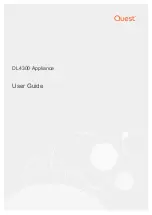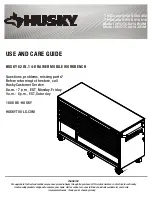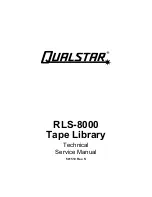
•
ETERNUS DX600 S5
Figure 151
Rear View of a Controller Enclosure (ETERNUS DX600 S5)
8
8
1
1
9
9
CPSU#0
CPSU#1
CA#0
CA#1
CA#0
CA#1
CA#2
CA#3
CA#2
CA#3
2
2
CM#0
CM#1
BUD#1
BUD#0
BUD#1
BUD#0
5
4
3
7
6
1
Controller (CM#0, CM#1)
(Refer to
.)
2
Host interface (CA#0, CA#1, CA#2, CA#3)
(Refer to
"■ Host Interfaces" (page 259)
.)
3
RMT (LAN) port
This port is used for connecting a LAN cable. Use this port to separate the network (such as for the
remote support) from the MNT port for operation management. This port uses an RJ-45 connector.
(Refer to
"■ MNT Ports/RMT Ports/FST Ports" (page 263)
4
MNT (LAN) port
This port is used for connecting a LAN cable and used for operation management. This port uses an
RJ-45 connector.
(Refer to
"■ MNT Ports/RMT Ports/FST Ports" (page 263)
5
FST (LAN) port
A port that is dedicated for maintenance engineers. Customers must not use this port.
(Refer to
"■ MNT Ports/RMT Ports/FST Ports" (page 263)
6
Drive interface (OUT) port
This port is used to connect a controller enclosure to a drive enclosure with a mini SAS HD cable
between enclosures.
(Refer to
"■ Drive Interface Ports" (page 263)
7
PWC port
This port is used to connect a power synchronized unit with an RS232C cable.
(Refer to
.)
8
Power supply unit (CPSU#0, CPSU#1)
(Refer to
"■ Power Supply Units" (page 264)
.)
9
BUD (BUD#0, BUD#1)
(Refer to
.)
6. Hardware Configurations
Controller Enclosure
254
Design Guide
Summary of Contents for ETERNUS DX S5 Series
Page 335: ......
















































